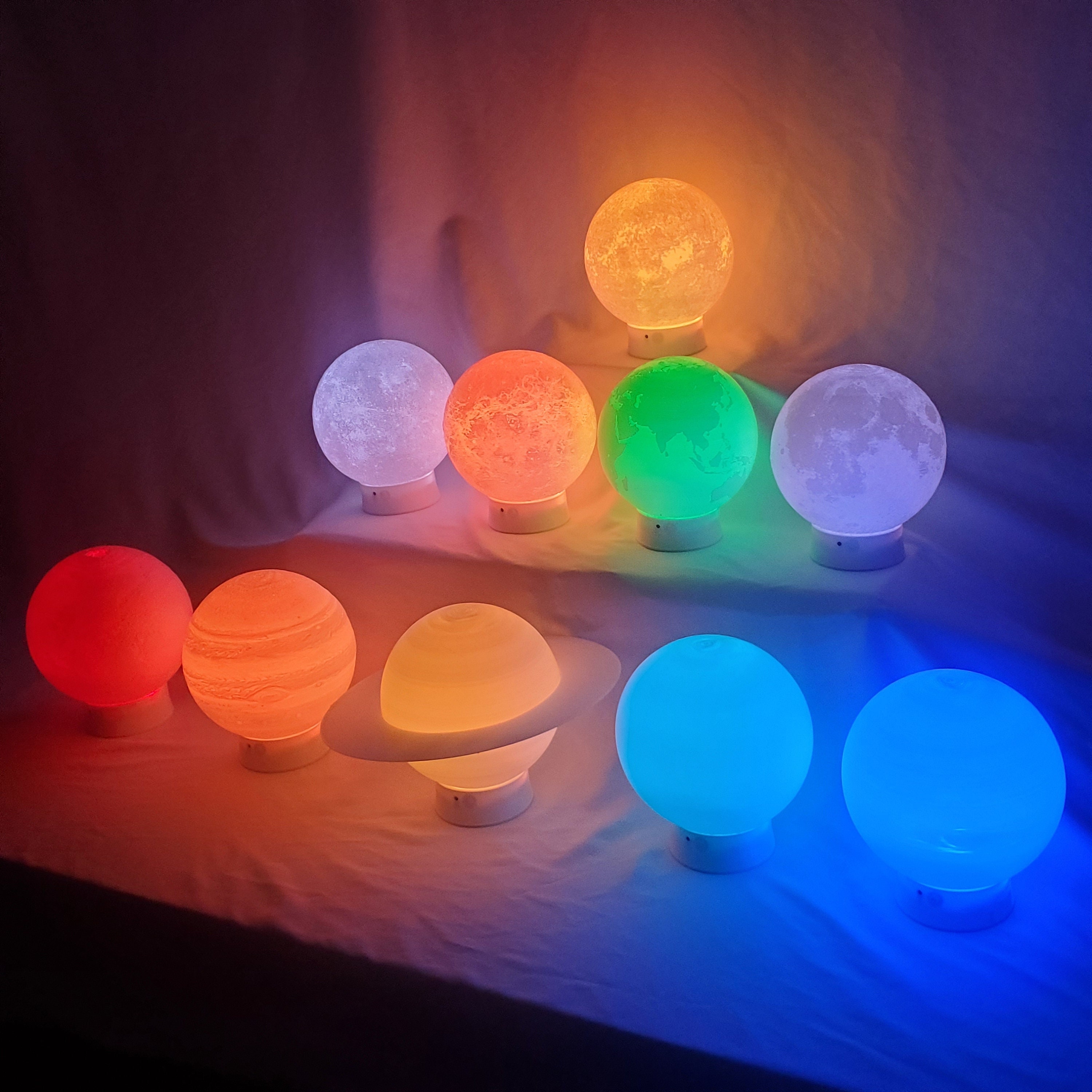Description
So far this semester we have looked at a few different methods of designing 3D forms for printing, and one of them stuck with me the most. One of the particular methods we employed in our data driven design assignment was the use of bitmaps to generate designs. One of our peers (Jaime) in particular took advantage of this to make semi-spherical prints that showed beautiful representations of certain geographical features. For my final project I want to build on her work and take it a step further; spherical planets.
As someone who has been fascinated with astronomy since I was little, the idea of most things space makes me giddy. The thought of 3D printing the rocky planets (and potentially gas giants) and moons to make a 3D model enhances that feeling even more. For this project I want to investigate potential printing techniques for spherical objects and how far certain materials can be pushed within my current means to create astounding, but difficult forms. This project will also dig a little deeper into accurately printing a wholly spherical object from our data, a flat image, helped greatly by Jaime’s amazing work in her data driven forms. Taking the completed forms, I’d like to 3D print the supporting pieces to make an actual model or art piece. This may take the form of a lamp cover or other practical objects that take advantage of spherical objects.
Deliverables
- Experimentally sized spheroids to document behavior
- Spherically printed objects using different materials (ceramic, metal, etc.)
- Algorithm to take topological data of a planet and wrap it accurately into in a sphere shape
- Examples of other computational design techniques to alter the shape into practical forms (lamp shade, mug, etc.)


Timeline
- Nov 3: Test simple size and other slicer changes to find most stable settings for spheroid printing
- Nov 7: Test simple spherical shape printing in the labs clay/metal printer for feasibility (knowledge and properties alike)
- Nov 14: Research and create algorithms to translate planetary topological maps into Rhino geometry
- Nov 28: Extra time for algorithms if problems arise, use subtractive modeling for interesting practical changes
- Dec 8: Create finalized forms with highest refinement found through the previous steps
Research
The following links look to be potentially useful for my pursuit of my deliverables and timelines. The first one looks at using a different method of FDM 3D printing that better supports creating spherical objects where features are printing onto the surface (like our topological maps would create) and should be very helpful. Another study’s the mechanical strength of a spherical print in PLA which could be helpful in general printing tactics as well as advice for how best to alter the spherical shapes to make practical forms without creating structural weakness.
Hi Christopher, that is a very neat idea. Will you be using any special kind of filament (other than the ceramic and pvc)? such as glow in the dark or I wonder if there is a clear filament that can allow for some sort of liquid to be injected into the sphere.
Hi Michaela!
Thank you so much for the suggestion, I think the liquid idea is actually amazingly unique and has given me some ideas to look into! I actually recently got some PLA plastic that looks like marble (it has multiple materials inside of it). It’s not much different than a regular single color, but I think the effect will be very noticable!
The example pictures you provided are beautiful representations of what your plan is and I am excited too see how you implement it. Michaela had a really neat idea to inject liquid into the sphere in some way.
Hey Lasair,
I also really liked the liquid idea! I’m looking into some potential lighting abilities to include with this (something like glow stick liquid maybe? Though I’m not sure how safe these would be). The Earth image I included is a really good indicator of what I’d like it to look like!
Hi Christopher!
This is a really cool idea! Camila has a recent paper and algorithm that she wrote that allows for more stable printing in clay using a modulating wavy pattern. It may require smoothing after, but it could possibly something that helps create more stable spherical prints if that’s the medium you’re going to use?
Hey Jaime!
I am actually actively looking into the material aspect of this project. Thank you for pointing me towards as I’d like to see how effective each material may be! I also saw that you’re also building on your previous printed forms (I apologize for hopping on the same wagon!) so I would love to do some cooperative studying on this if you’d like!